Historic Charmers
A Farmhouse is Transformed, Yet Preserved
By Niva Dorell | Karen Pearson | Fall 2015 | Features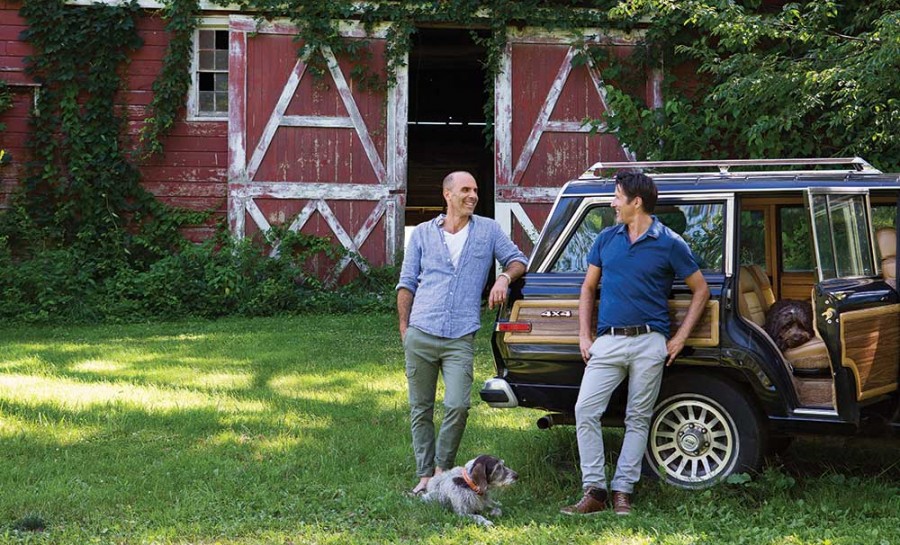
Nine years ago, New Yorkers Andrew Arrick and Michael Hofemann bought a 4,000-square-foot farmhouse and former inn in Tivoli dating back to the late 1700s. Ironically, they had absolutely no furniture to put in it. They were living in a Williamsburg, Brooklyn, loft (featured in Elle Décor in November 2007), and their mostly midcentury modern furniture wasn’t appropriate for a farmhouse. Arrick recalls walking through the empty farmhouse, thinking, “This is kind of insane. We don’t have anything.”
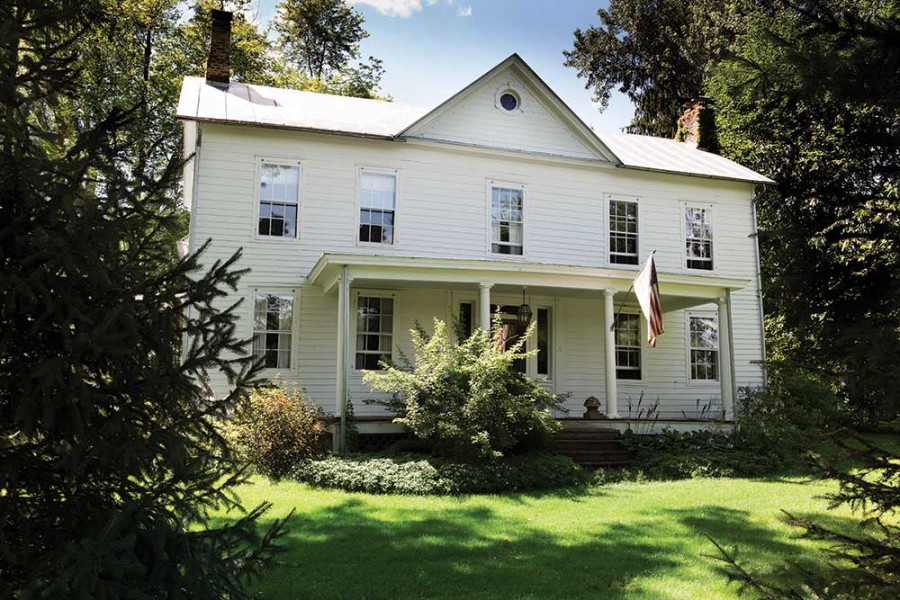
To their credit, Arrick and Hofemann are known for having impeccable taste. Arrick was head of sales for Yves Saint Laurent, Carolina Herrera, and Vera Wang. Hofemann, a former marketing compony COO, buys and sources handcrafted items from Copenhagen, Stockholm, and the Hudson Valley for FINCH Life Curated, the lifestyle design store he and Arrick opened in Hudson two years ago.
The couple had been visiting friends in Catskill and Kinderhook and shopping in Hudson for years, all the time checking out the area. Once they decided to buy their own place, they did exactly what people tell buyers not to do.
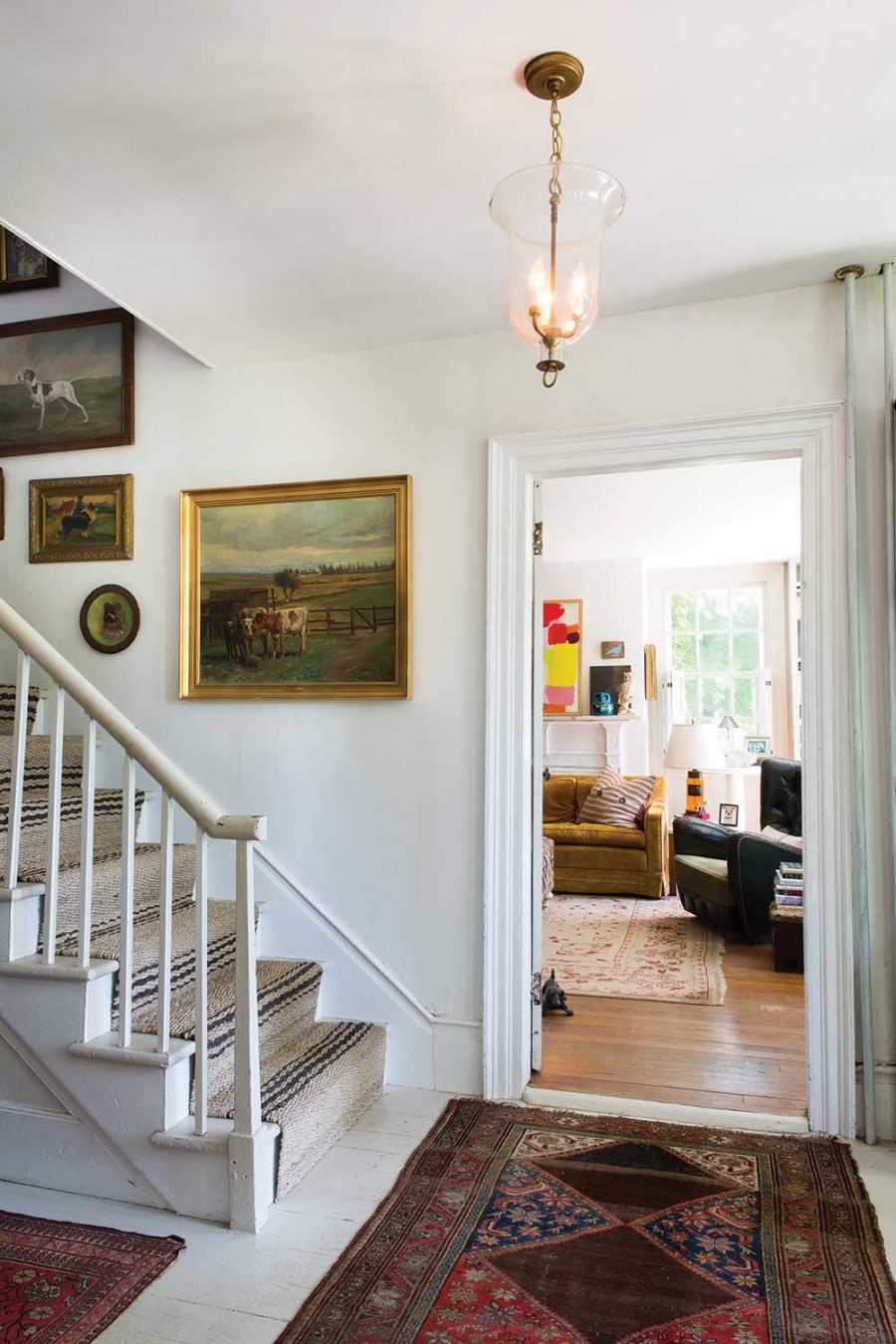
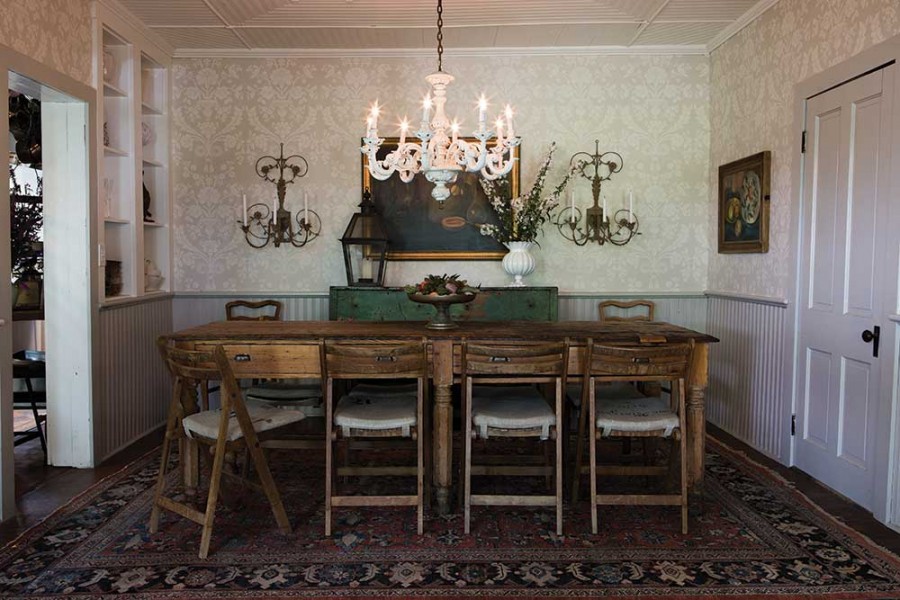
But it’s easy to understand why. The four-bedroom, two-bathroom home, nicknamed “Tivoli Farmhouse,” was once the Locust Rest & Tea Room and part of the 150-acre Clum Farm. While the second floor has a traditional center hall structure with the master bedroom and a guest room located on either side of the stairway, the first floor is uncharacteristically open. Arrick and Hofemann call the spacious ground-floor room the “keeping room,” since guests congregate there while they cook and entertain in the nearby kitchen and dining areas. Off the communal area are a formal living room and small library.
Often when buying a new house, people make a list of things they want to change about it. Arrick and Hofemann were no different. “But what we thought needed to happen initially, actually didn’t,” Arrick says. “By taking our time, things happened organically.” Gradually, he and Hofemann transformed the Federal Colonial farmhouse into a cozy and eclectic home that no doubt would’ve pleases its former owners. In fact, the grandson of the innkeeper so appreaciated Arrick and Hofemann’s preserving the house’s original character that he gave them a sign from the inn that reads: “Blue Plate Dinner 60 Cents, Served Anytime.”
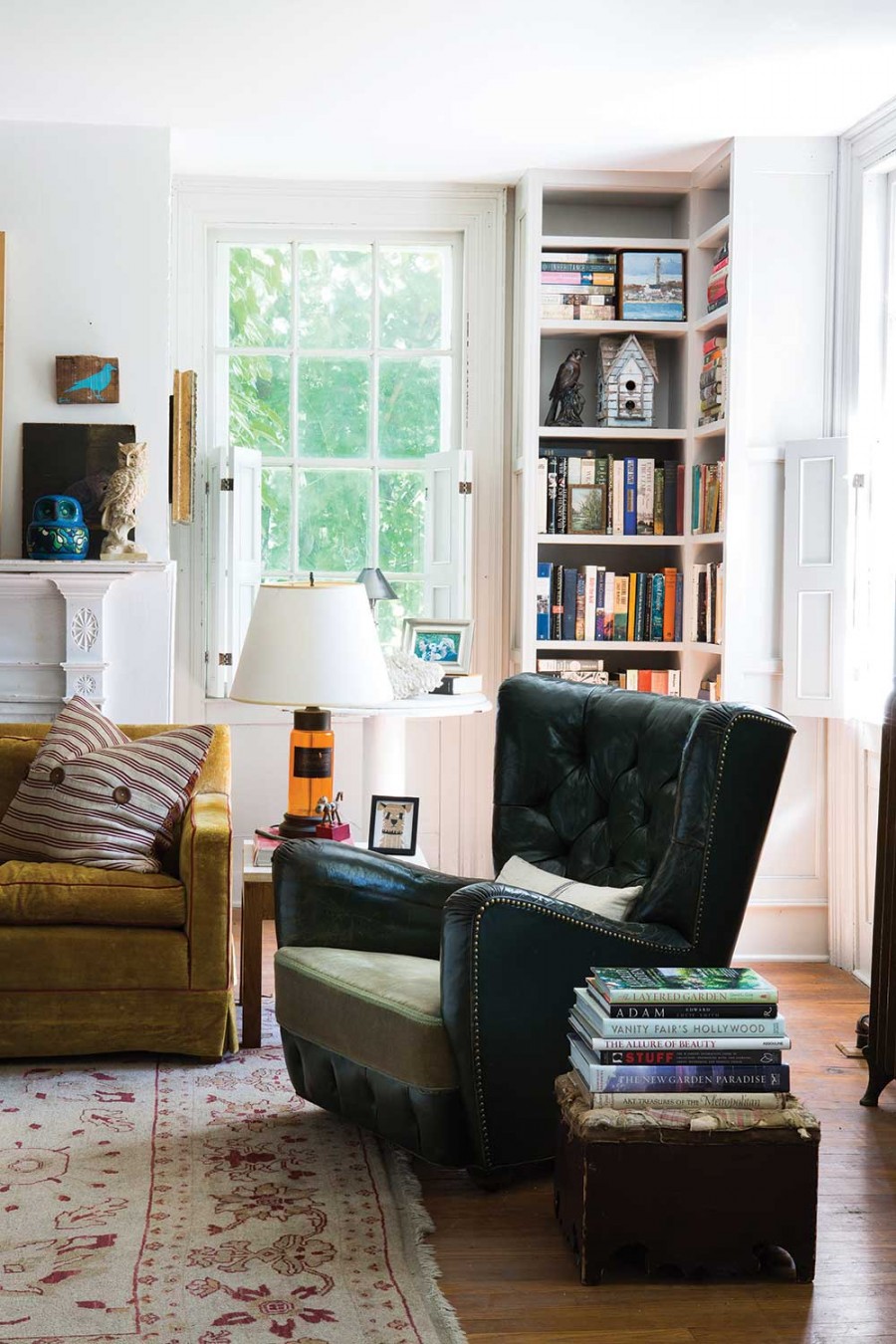
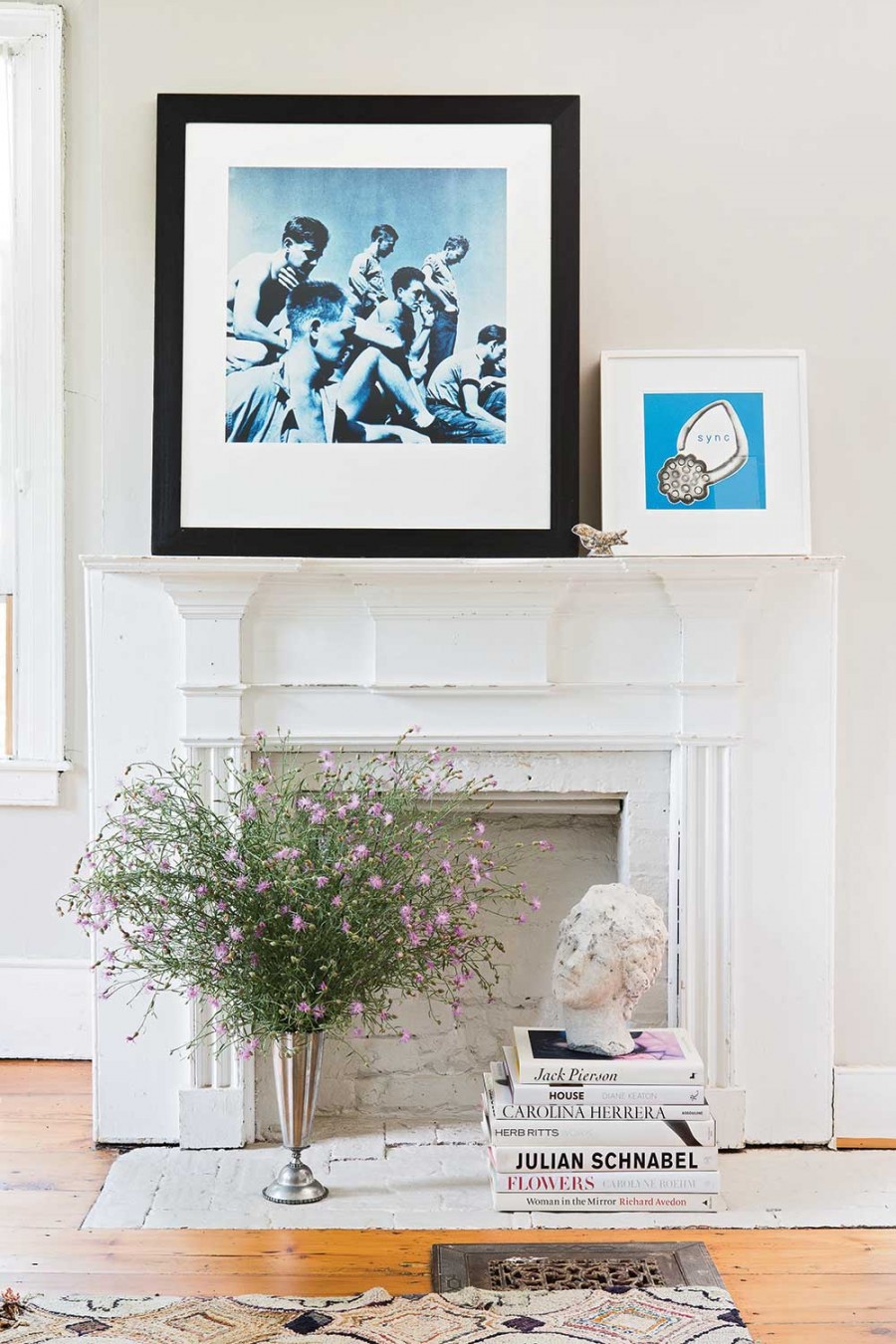
Within the first few years of homeownership, the couple made necessary structuaral repairs: strengthening the foundation, replacing the furnace, and installing new wiring, plumbing, and windowsills. Eventually, they also made cosmetic changes, convertng a small upstairs bedroom into a walk-in closet; opening the wall between the dining room and kitchen; painting the first floor’s dark wainsotting light gray; and updating the kitchen with French doors, vintage marble counters, an old sink, new shelving, vintage-style cabinets, and a Viking stove. The kitchen hadn’t been renovated since the 1970s, Arrick says, joking, “I think there was some avocado involved.” Vintage furniture and artwork, mostly found at antique stores, added pops of color.
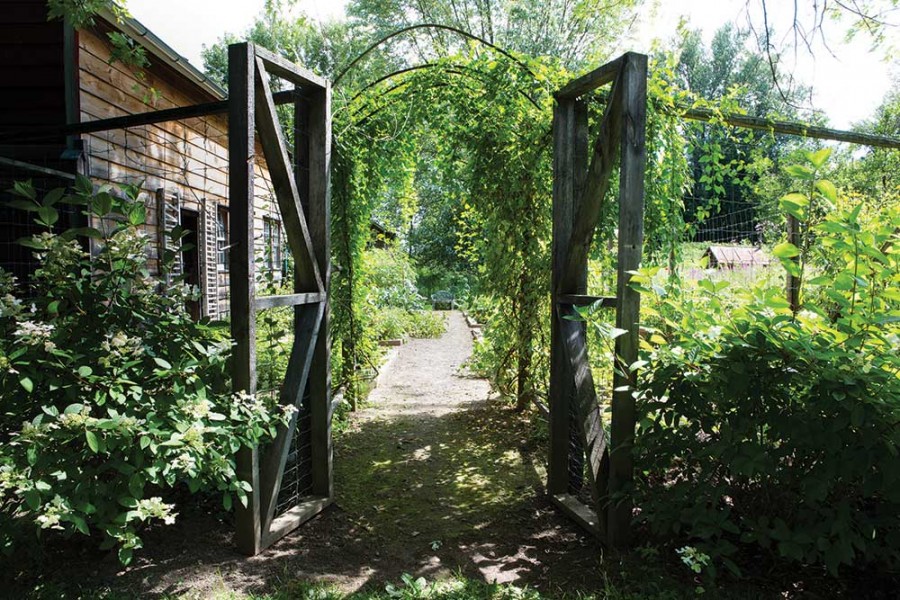
Initially, the couple remained in Williamsburg and traveled to Tivoli on weekends, but, as Arrick puts it, “Going back on Sundays becomes going back on Monday mornings.” Three years ago, they moved full-time to Tivoli. “It was about a five-year process to get to where things are today, with constantly evolving décor,” says Arrick. That décor is a combination of vintage styles so harmonious that the incongruence of a midcentury modern coffee table, French deco chairs, 1900s farm table, and 1930s French leather-top deck is unapparent. Some of the house’s pieces come from FINCH, and vice versa. “We buy here the way we buy for the store- we buy what we love,” Arrick says.
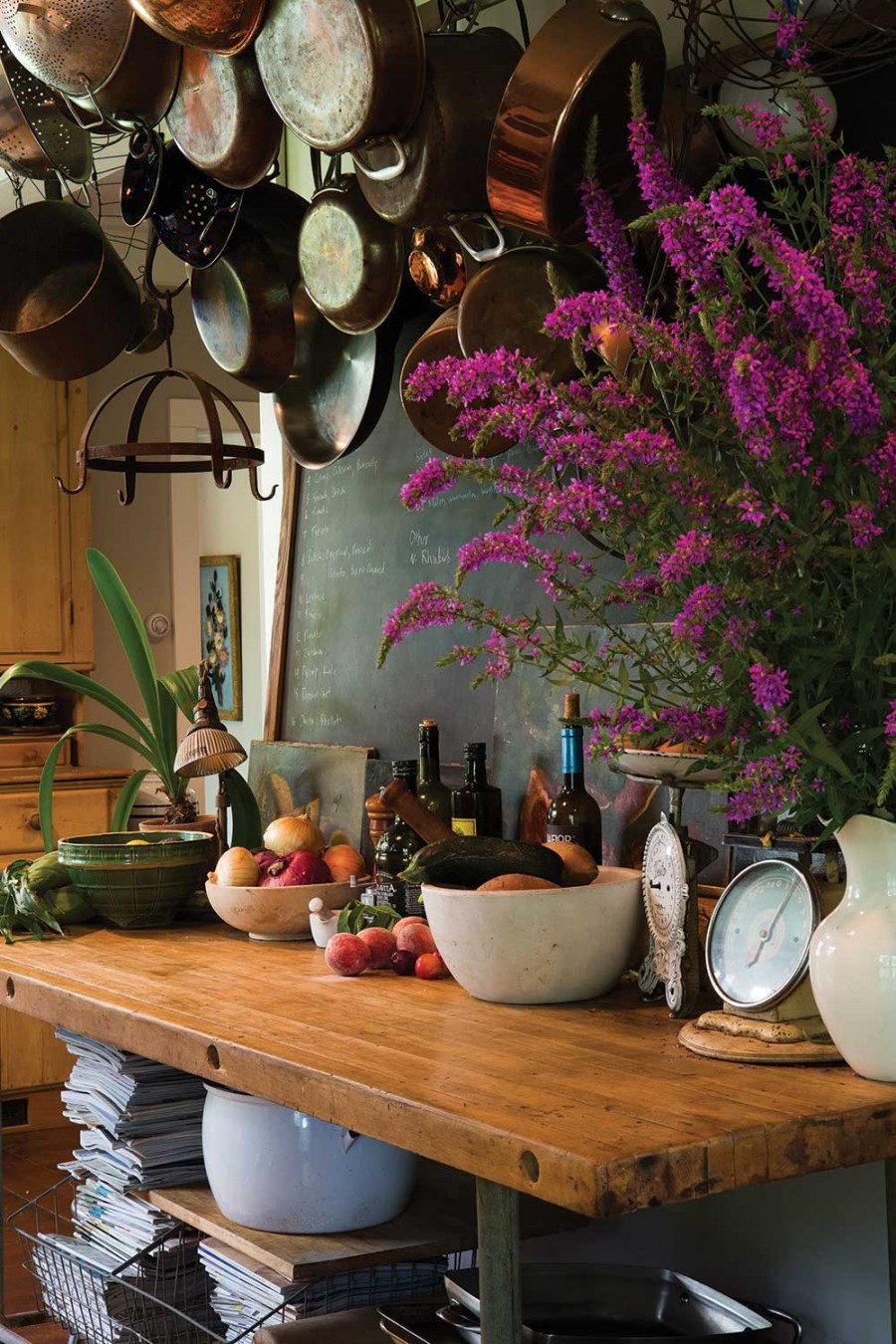
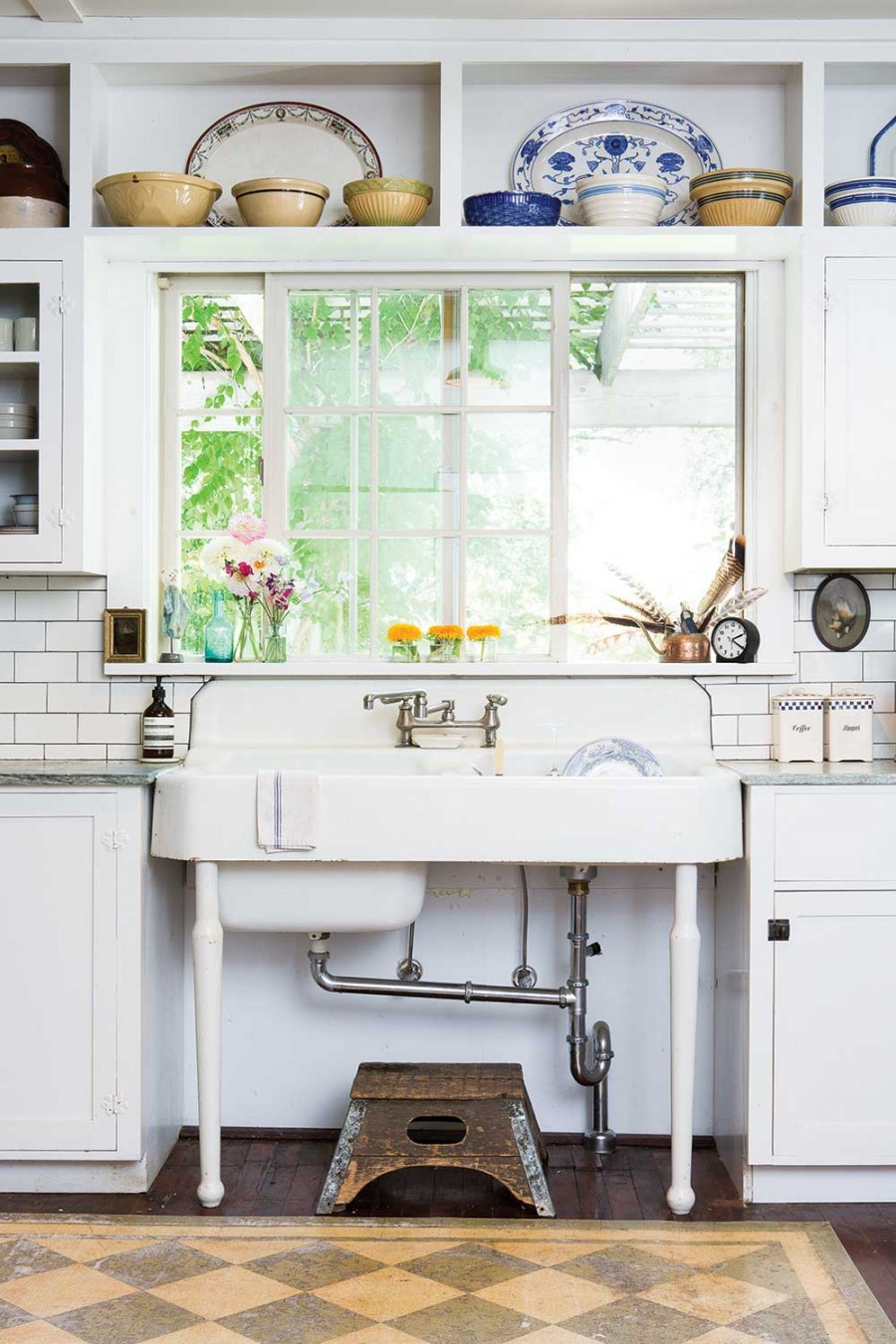
Today, Arrick and Hofemann juggle running FINCH and managing the farmhouse and its four acres and five outbuildings: a former chicken coop they plan to turn into an outdoor dining room and potting shed, and four barns used as a garden shed, carpentry workroom, firewood storage, and hay storage for a neighbor farmer. Although Arrick and Hofemann furnished the house together, they split its operation: Hofemann does the landscaping and keeps a vegetable garden, while Arrick does the cooking and decorating. “It’s a very good balance,” Hofemann says.
Tivoli Farmhouse will be included in a book on country interiors and entertaining, to be published by Rizzoli in 2017, by Joan Osofsky, author of Love Where You Live (Rizzoli, 2013) and owner of Hammertown home décor stores in Rhinebeck, Pine Plains, and Great Barrington, Massachusetts.
